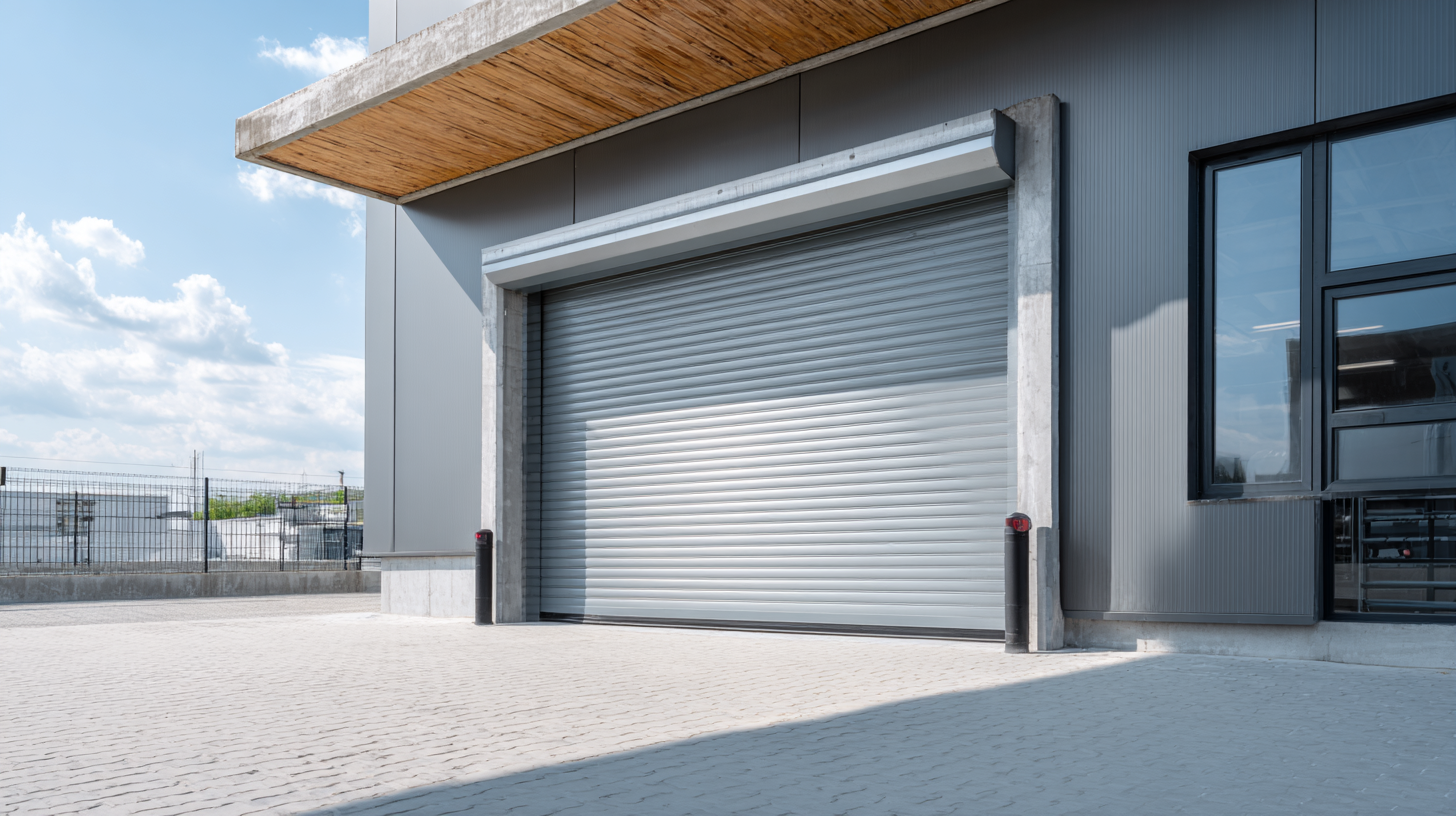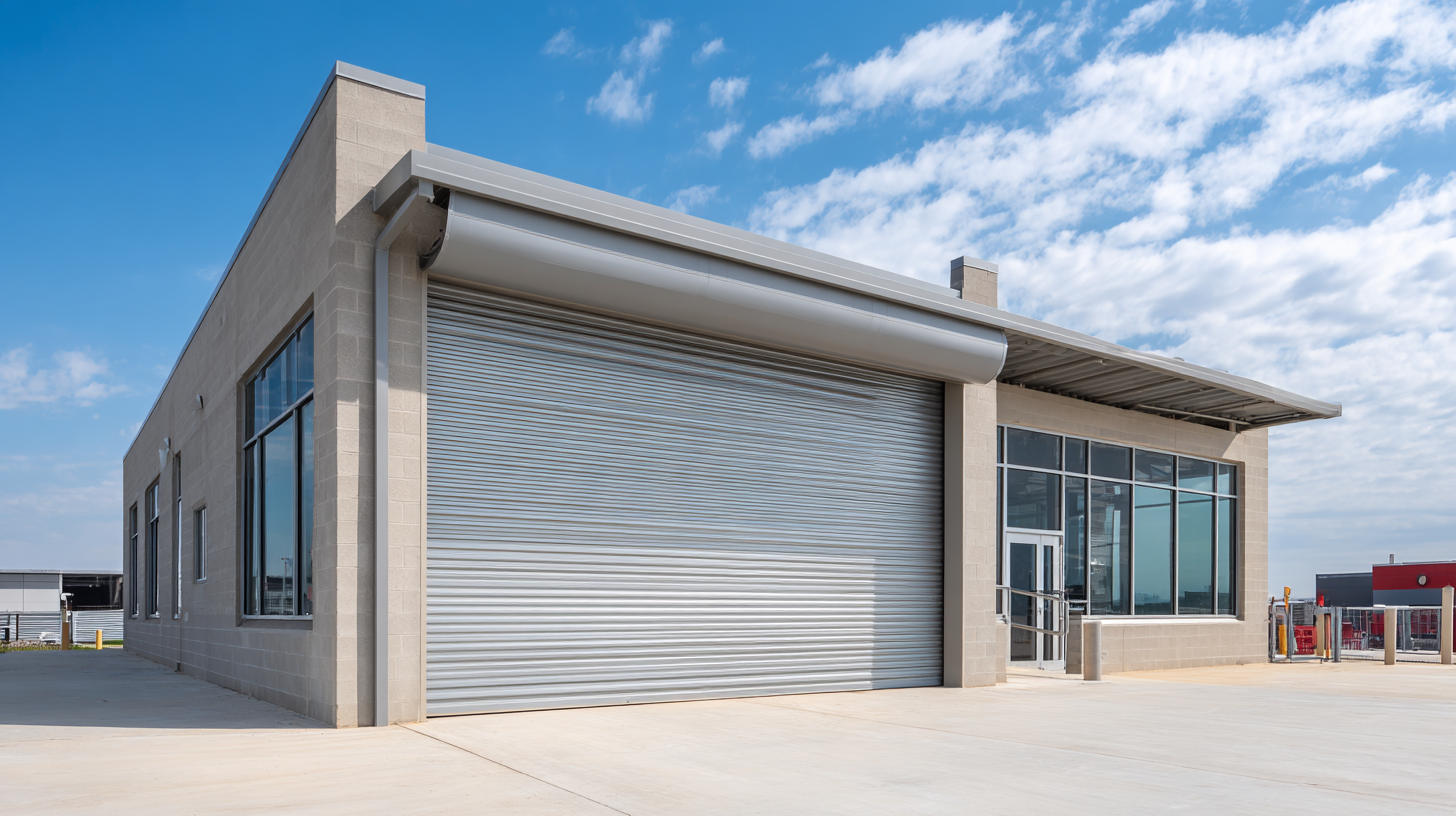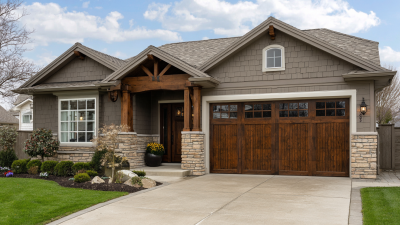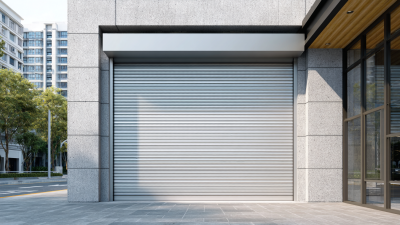In the realm of modern industrial spaces, the choice of entryway solutions plays a crucial role in optimizing functionality, security, and aesthetic appeal. Roll up doors have emerged as a favored option for many businesses due to their unique design and numerous benefits. These innovative doors not only provide seamless access to a facility but also save valuable space when opened, making them ideal for warehouses, distribution centers, and manufacturing plants. Their sturdy construction ensures enhanced durability and resistance to environmental factors, while customizable options allow for a tailored fit to meet specific operational needs. Additionally, roll up doors contribute to energy efficiency by minimizing air exchange and protecting against the elements. As we delve deeper into the advantages of roll up doors, it becomes evident that these features make them an indispensable choice for the modern industrial landscape.

Roll up doors have become increasingly popular in modern industrial spaces due to their significant impact on efficiency. These doors are designed to maximize access while minimizing the amount of space they occupy, allowing for seamless operations in busy facilities. The ability to quickly open and close these doors helps reduce energy loss, maintain climate control, and streamline the movement of goods. Consequently, businesses can see a marked improvement in workflow and productivity.
Tips for Choosing Roll Up Doors:
When selecting roll up doors for your facility, consider materials that offer durability and insulation. Steel and aluminum are common choices, with steel providing robustness and aluminum being lightweight. Additionally, opt for motorized systems that enhance speed and convenience, as automated doors can significantly reduce waiting times and improve safety by minimizing human error during operation.

Another factor to consider is the door's size and design. Customizing the size to fit specific openings ensures optimal functionality, while features like weather seals can protect against external elements. Investing in high-quality roll up doors not only boosts operational efficiency but also contributes to long-term cost savings through reduced maintenance and energy requirements.
Roll up doors have become increasingly popular in modern industrial spaces, primarily due to their cost-effective nature. One of the most significant advantages is the reduction of operational expenses. Unlike traditional doors, roll up doors require less space and offer increased energy efficiency, which leads to lower heating and cooling costs. The design minimizes air leakage, ensuring that the internal climate remains stable, reducing the need for constant HVAC adjustments.

Moreover, roll up doors offer durability and reduced maintenance requirements, which further contribute to cost savings. Constructed from robust materials, these doors can withstand heavy use and adverse weather conditions, leading to fewer repairs and replacements over time. Additionally, their ease of operation allows for quicker access, improving workflow and productivity within the facility. This combination of efficiency and reliability makes roll up doors a savvy investment for industrial operators looking to lower their long-term operational expenses.
Roll up doors have become an essential component in modern industrial spaces, particularly when it comes to enhancing security. These doors are designed to provide a robust barrier against unauthorized access while allowing for seamless operation during business hours. Unlike traditional swinging doors, roll up doors can be securely closed and locked, offering a greater level of safety for valuable equipment and inventory stored within industrial premises. The materials used in their construction, often steel or aluminum, can withstand various external threats, including tampering and extreme weather conditions.
Furthermore, the installation of roll up doors contributes to an overall safety culture within industrial environments. By effectively controlling access points, these doors minimize the risk of accidents caused by unauthorized personnel wandering into sensitive areas. Their efficient design also supports quick entry and exit, crucial during emergencies. Enhanced visibility options, such as transparent slats or windows, allow for easy monitoring of activities while maintaining the integrity of security protocols. In essence, roll up doors not only fortify physical security but also play a pivotal role in promoting a safe working atmosphere in industrial settings.
Roll up doors are becoming increasingly popular in modern industrial spaces due to their space-saving design and operational efficiency. Traditional doors often require significant clearance and swing space, limiting the ability to utilize available floor area effectively. In contrast, roll up doors retract vertically, allowing for maximum use of overhead space. This feature is particularly advantageous for facilities with high ceilings, where storing materials or equipment above the ground can significantly enhance operational flow.
Furthermore, the compact nature of roll up doors facilitates more flexible layouts. Businesses can optimize their internal organization by reducing the footprint of entrances, enabling the reallocation of space for additional machinery, storage, or workstations. As industrial designs strive for greater efficiency, the ability to customize and adapt spaces becomes paramount. Roll up doors not only streamline access for personnel and machinery but also contribute to an organized, safe, and aesthetically pleasing environment. By incorporating roll up doors, modern industrial spaces can achieve both functional and spatial advantages that support their evolving operational needs.
Modern industrial spaces are increasingly recognizing the importance of energy efficiency, leading to the adoption of advanced roll up door technologies. According to a report by the National Institute of Building Sciences, energy-efficient doors can result in a reduction of heating and cooling costs by up to 25%. This is particularly valuable in large warehouses and manufacturing facilities, where air leakage can significantly impact energy expenditure. The tight seals and insulated options available in today’s roll up doors help maintain internal temperatures, thus lowering reliance on HVAC systems.
Furthermore, reports from the American Society of Heating, Refrigerating and Air-Conditioning Engineers (ASHRAE) indicate that roll up doors with advanced insulation can improve energy performance by enhancing building envelope efficiency. For example, doors designed with reflective coatings can reduce solar heat gain and subsequently decrease the burden on cooling systems. As industries strive toward sustainability, investing in modern roll up door technologies not only supports environmental goals but also translates into measurable financial savings, reinforcing the doors’ role as a crucial component in eco-friendly industrial designs.
| Feature | Standard Roll Up Doors | Modern Roll Up Doors | Energy Efficiency Improvement (%) |
|---|---|---|---|
| Insulation | Basic Insulation | Advanced Insulation | 30% |
| Air Leakage | High Leakage Rate | Low Leakage Rate | 25% |
| Material Durability | Standard Materials | High-Durability Materials | 15% |
| Operating Speed | Slow | Fast | 20% |
| Maintenance Frequency | High | Low | 10% |







Since 1984, Thermostop has been a reputable manufacturer of Industrial Sectional Doors, Cold Storage Doors and Specialty Doors such as Impactable Breakaway doors, Acoustic Doors and Ballistic Doors.
Contact